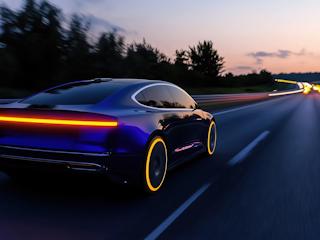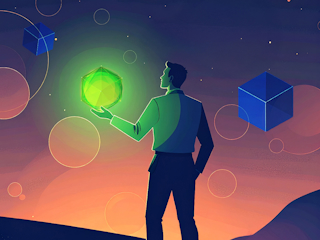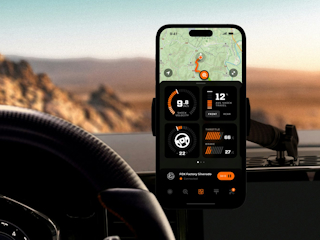The definition af an agency
Just like there are lots of different kinds of doctors (ear, nose and throat, family practitioner, cardiologist), there are lots of different kinds of digital agencies. You’ll hear terms like full service, digital marketing, paid media, SEO, and many others. I’ll only explain the kind of digital agency that Valtech has become over the past ten years: digital innovation through products and experiences. So this post is not going to cover a good half of what a digital agency could do, or even why we need to have the word digital in it, but it will help my parents understand what I do, help explain more why we call ourselves a digital innovation agency and what Valtech specializes in.
What kind of agency is Valtech?
In short, Valtech is a new type of digital agency that makes the digital products and experiences that people use and interact with every day. There’s no shortage of digital things that could be made, but what resonates with us are those that enhance the human experience. A delightful interaction at a theme park that fills a child with wonder? An immersive adventure in a retail space that spurs the imagination? That’s us. A sterile workflow tool for tracking cog production in some soul-stealing enterprise hell? Not so much.
What we do is unleash our technical and creative expertise on problems where digital can make a difference in people’s lives. Sure, the solutions we come up with may include mobile (iOS/Android) applications, custom software, or augmented reality—just as a soufflé includes flour, eggs, and butter. Ultimately, we seek to create something greater than the mere ingredients.
We’re a new type of digital agency that helps clients understand how digital interacts with the physical world around us
Industry Jargon: UX
When we build a digital product or experience, our goal is to create something that enhances the real world around us, not just interrupt us to sell something. For instance, we built a mobile application for Viper that allows people to turn on their cars with a watch. (Dad, it’s kind of like Kit from Knight Rider.) We built a mobile app and website for Disney Imagineering that made their Haunted Mansion attraction come alive online, on your phone with augmented reality, and in the park with a personalized ghost story.
Our job as a new type of digital agency is to make sure that the digital layers we are adding onto these physical environments are simple and beautiful. The experience could be many things—fun, inspirational, thought provoking, educational, functional—but it is our job to make sure it’s worthwhile and valuable for those using it. There are lots of digital experiences that suck. Banner ads come to mind. Or anything that uses Papyrus font. We strive to build the opposite of “suck”.
So, how do we arrive at this understanding of what’s valuable to the user?
First, we seek to see the world from their perspective—to empathize with the folks that we’ll be building for. Through some fancy-sounding activities (field research, empathy mapping, contextual inquiry) we gain a meaningful understanding of what the user thinks, feels, and wants, as well as the context in which they’re doing their thing. Really, this boils down to talking with them. Asking questions, observing, listening and deeply identifying with their views. We can then take what we’ve learned through dialogue and create a way to think about who they are (personas).
From here, we begin to marry what we know about the user with what our clients are looking to achieve from a business perspective. Now, you could take a concept, design it all out, build out every screen, and say “okay, here’s what we think we heard the user say”, but that’s a (very) expensive way to do things. Instead, we go light and lean and sketch out our ideas—sometimes literally on paper (prototyping). We take these sketches and present them to test users, get their feedback, and iterate. This screen doesn’t make sense? How do I get from here to here? Okay—let’s whip out a new sketch. In this way, fixing issues and streamlining interactions can be done in minutes instead of months, which makes everybody happy. This (user testing) is one of the most fun parts of what we do. We get to spring new ideas on unsuspecting folks to see what they like, what they hate, or worst of all, are just kinda “meh” about.
Our goal is to only build digital products that people will find useful. There’s simply no point in spending time and money building something people won’t use.
We’re a modern digital agency that designs digital products and experiences that are beautiful, simple, useful and innovative
Industry Jargon: Human-Centered Design
There is so much noise around us. We aim to create peace amid the digital chaos of the modern world. We do this by designing intuitive interfaces that a person won’t have to figure out in order to use. The UX process above enables us to remove all the extraneous stuff and identify the essential. From here we innovate.
Design innovation can take two paths: evolution and revolution. Apple didn’t design the first digital phone interface, but with iOS, they evolved what already existed into the best version yet seen. On the other hand, when Chuck Hull designed the first 3D printer in 1983 it was the revolution of an entire industry. Never heard of Chuck Hull? That’s because evolutionary design (Apple) is usually easier and a lot more profitable than revolutionary design. Creating entirely new industries is really hard work.
Here are some examples: Qualcomm Ventures required a site that provided easy access to information, with a forward-thinking interface that demonstrated their position in the market. We evolved the established conventions of the modern business website to create a progressive experience that highlights their investments and expertise.
For Stride Rite, we built a revolutionary shoe sizing iPad app for kids and parents. Kids no longer have to endure the cold metal of the Brannock sizing device on bare piggies. Instead, parents can just take out their tablet, aim it at their feet, and BAM! you have a foot size. This had never been done in the industry, and it created a disruption.
We’re a new breed of digital agency that builds products rather than doing marketing or advertising
Industry Jargon: Engineering and Development
This one might not be as obvious as it sounds. It is easy to talk about building products, but rather difficult to actually do. Turns out, there’s actual science in Computer Science. Thankfully, a whole lot of smart people have developed ways to not only build great things but build them efficiently and reliably. We can quickly get in the weeds talking about how things are built (test-driven development, pair programming, decoupled architecture, software development life cycle), or what’s used to build them (message broker, data store, Xcode, Kotlin, noSQL), but nevermind all that. The important takeaway is that we are grateful to be able to stand on the shoulders of technology giants and produce things that are—essentially—magic.
And just like the construction and manufacturing industries that fuelled economic growth when mom and dad were growing up, it’s digital products that fuel today’s growth. Instead of steel, heavy machinery, concrete, and glass, our version of the Industrial Revolution involves software, mobile apps, websites, virtual and augmented reality and data. Unlike past economies, our products have the opportunity to benefit humanity faster, and at a larger scale than ever possible. Digital products can open borders, spread ideas, enable economic prosperity, entertain, and profoundly impact our daily lives.
While that’s a few too many words for mom and dad on a phone call, it boils down to this: Through hard work, we figure out people’s needs and our client’s goals, bring them alive with crazy and fun ideation, and get our digital products and experiences in people’s hands. And that is a pretty fun thing to tell the parents.










